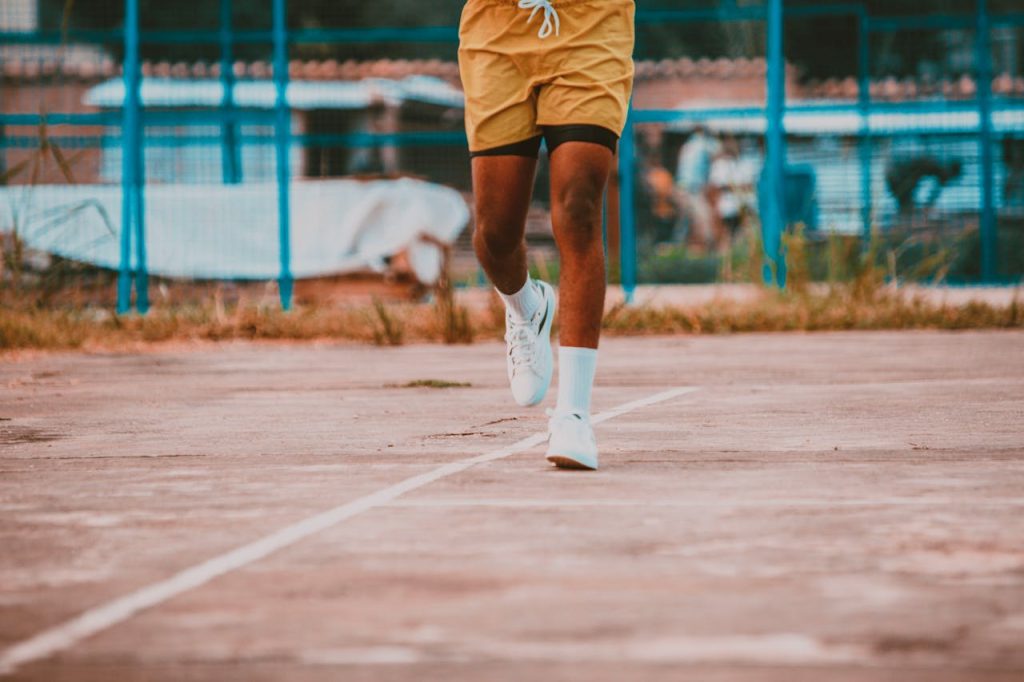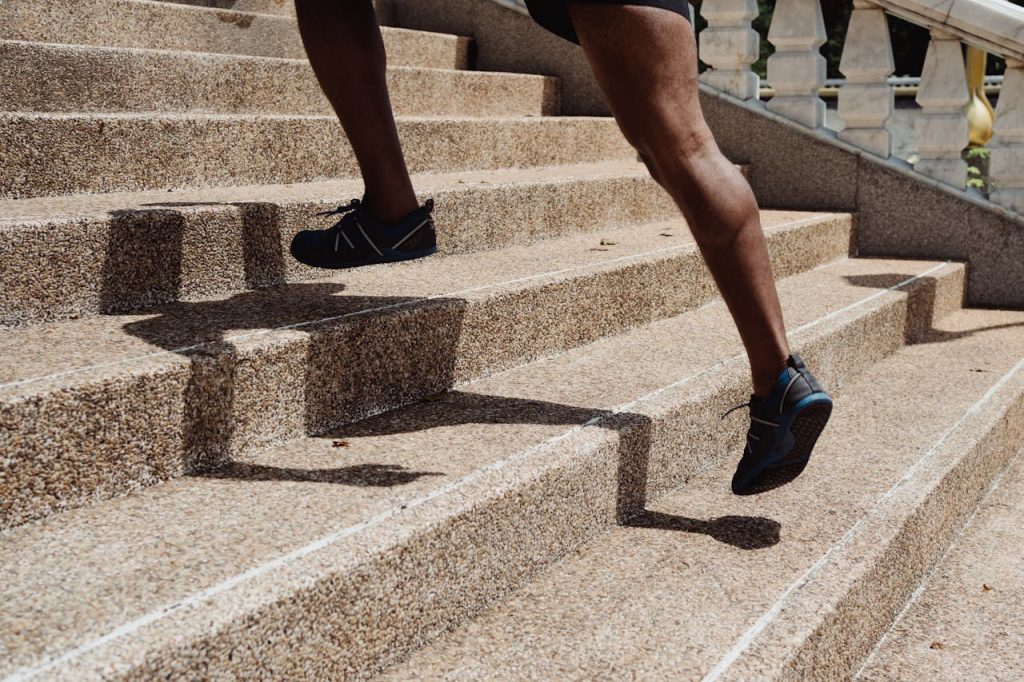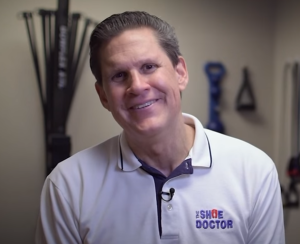Orthotics play a crucial role in alleviating Achilles tendonitis pain and tendinosis. Understanding how orthotics work can significantly impact your recovery journey, rehabilitation, physical therapy, and manual therapy. By providing support and alignment to the foot and ankle, orthotics help reduce strain on the Achilles tendon, promoting healing and preventing further injury. Learn about orthotics and how they help with Achilles tendonitis pain in this article. Discover how orthotics work and the advantages they offer for those suffering from this condition. Whether you are exploring treatment options or seeking ways to enhance your comfort and mobility, grasping the basics of orthotics is essential for informed decision-making in managing Achilles tendonitis effectively.
Identifying Achilles Tendonitis
Recognizing Symptoms
Pain, swelling, and stiffness near the heel signal possible Achilles tendonitis. The pain may worsen with activity and subside with rest periods. Thickening or swelling of the Achilles tendon, tendinosis, chronic, or rupture should be noted for diagnosis.
Causes And risks
Overuse or sudden increase in exercise are common triggers of Achilles tendonitis. Tight calf muscles, improper footwear, and exercise can lead to this condition. Age and certain sports activities, like running, can heighten the risk.
When To Seek Help
Persistent Achilles tendon pain in patients warrants clinical ultrasound for proper diagnosis and exercise advice. If symptoms hinder daily activities, consulting a healthcare provider is crucial. Delaying seeking help is discouraged, especially if conservative treatments prove ineffective.
Understanding Orthotics
What Are Orthotics?
Orthotics are custom-made inserts placed inside shoes to provide foot support and alleviate pain. These devices help in redistributing pressure evenly across the foot, reducing discomfort. They also play a crucial role in correcting biomechanical issues, ensuring proper foot alignment, tendon, clinical, study, and review.
- Custom-made shoe inserts
- Redistribution of pressure
- Correction of biomechanical issues
Types For Achilles Tendonitis
Full-length orthotics offer comprehensive support for Achilles tendonitis by providing stability throughout the foot. Custom-fit orthotics specifically designed for this condition offer tailored relief. Differentiating between everyday wear and athletic orthotics is important for optimal comfort and performance.
- Full-length orthotics
- Custom-fit for tailored relief
- Everyday vs athletic use
How They Work
Orthotics are special shoe inserts that can help people with Achilles tendonitis feel better. They provide stability and support to your feet, which can make it easier for you to walk and move around without feeling as much pain. When you have Achilles tendonitis, the tendon that connects your calf muscles to your heel can get strained and hurt. Orthotics can help reduce the strain on your Achilles tendon by cushioning your heel and supporting your arch. This can help prevent further damage to the tendon and give it a chance to heal. By promoting healing and relieving pain, orthotics can make it more comfortable for you to go about your day without worrying about your Achilles tendon hurting.
Role Of Orthotics In Treatment
Pain Relief Mechanisms
Orthotics play a crucial role in alleviating Achilles tendonitis pain by providing support and cushioning to the affected area. These devices help reduce stress on the tendon during movement, easing discomfort. By improving foot alignment, orthotics help distribute pressure evenly, aiding in pain reduction.
- Orthotics provide support and cushioning
- Reduces stress on the tendon during movement
- Improves foot alignment for even pressure distribution
Supporting Recovery
Orthotics aid in the recovery process from Achilles tendonitis by offloading pressure from the tendon. They assist in preventing further damage to the already injured area, allowing it to heal effectively. By providing stability and support, orthotics play a crucial role in facilitating tendon healing.
- Offloads pressure from the tendon
- Prevents further damage to the injured area
- Provides stability for effective healing
Preventing Future Injuries
Orthotics are essential for preventing future Achilles tendon injuries by reducing strain on the tendon during physical activities. Proper foot support is crucial in maintaining healthy foot mechanics and preventing overuse injuries. By reducing excessive stress on the Achilles tendon, orthotics help individuals avoid re-injury.
Choosing The Right Orthotics
Custom Vs Over-The-Counter
Custom-made orthotics are tailored to individual needs, offering precise support for Achilles tendonitis. They provide personalized cushioning and correction.
Pros of Custom Orthotics:
- Tailored support for specific foot issues.
- Enhanced comfort and effectiveness in pain relief.
Cons of Over-the-counter Inserts:
- Limited customization for individual requirements.
- Less effective in addressing unique foot conditions.
Material Considerations
Orthotics for Achilles tendonitis can be made from various materials like foam, gel, or plastic. The material choice significantly impacts the level of support and cushioning provided.
- Materials like memory foam offer contoured support, while gel provides cushioning for impact absorption.
- Plastic orthotics are known for their durability, but they may lack the breathability of foam or gel options.
Fit And Comfort
The proper fit of orthotics is crucial for effectively alleviating Achilles tendonitis pain. Ill-fitting inserts can worsen discomfort and hinder recovery progress.
- Comfortable orthotics ensure a seamless daily wear experience, reducing friction and pressure on the affected area.
- Certified professionals play a key role in assessing fit accuracy, making necessary adjustments for optimal support.
Using Orthotics Effectively
Breaking In Period
When starting to use orthotics, it’s crucial to understand the adjustment period required. Gradually increasing wearing time helps in getting accustomed to them. Managing any initial discomfort during the breaking-in period is essential.
- Start by wearing orthotics for a few hours each day.
- Increase the wearing time gradually over a couple of weeks.
- Use thicker socks initially to provide extra cushioning and reduce friction.
Daily Wear Guidelines
The recommended duration for wearing orthotics daily varies based on individual needs. Consistent use of orthotics is crucial for long-term pain relief. Daily wear supports the healing process by providing continuous support to the affected areas.
- Wear orthotics as per your healthcare provider’s recommendation.
- Consistency in wearing orthotics can help alleviate pain effectively.
- Regular use aids in maintaining proper foot alignment and reducing strain on the Achilles tendon.
Adjusting For Comfort
Making necessary adjustments for orthotic comfort is key to maximizing their benefits. Modifying orthotics to address specific comfort issues ensures they are tailored to your needs. Optimizing orthotic comfort during daily activities enhances their effectiveness.
- Consult with a podiatrist or orthopedist if experiencing discomfort.
- Customizing orthotics through padding or inserts can improve comfort.
- Ensure proper fit by checking for any rubbing, tightness, or slipping while wearing them.
Additional Treatment Approaches
Stretching Exercises
Stretching routines play a crucial role in complementing orthotic use for Achilles tendonitis. By incorporating specific stretches into your daily routine, you can improve flexibility and reduce strain on the affected area. These exercises work synergistically with orthotics to enhance their effectiveness.
Strengthening Routines
Engaging in strengthening exercises is vital for supporting Achilles tendonitis recovery. Targeted exercises focusing on calf muscles and Achilles tendon strength can aid in rehabilitation. Strengthening routines not only facilitates recovery but also helps prevent future injuries by fortifying the muscles around the affected area.
Rest And Recovery
Rest is a fundamental aspect of the recovery process from Achilles tendonitis. Adequate rest is essential as it complements the effects of orthotics by allowing the body to heal and recuperate. To optimize recovery, ensure you prioritize proper rest alongside the use of orthotics.

Tips For Faster Healing
Lifestyle Adjustments
Making lifestyle changes can significantly aid in the healing process of Achilles tendonitis. It is crucial to prioritize activities that do not strain the affected area. Wearing proper footwear with good arch support and cushioning can alleviate pressure on the Achilles tendon, promoting recovery.
Maintaining a healthy lifestyle through regular exercise and a balanced diet is essential for preventing the recurrence of tendonitis. Engaging in low-impact activities such as swimming or cycling can help improve flexibility and strength without exacerbating the condition.
Activity Modifications
When dealing with Achilles tendonitis, it is vital to modify activities to avoid further damage to the tendon. Opt for exercises that are gentle on the feet, such as yoga or Pilates, to reduce strain on the Achilles tendon. Avoid high-impact activities like running or jumping during the recovery phase.
Individuals with Achilles tendonitis should focus on incorporating low-impact exercises into their routine, such as water aerobics or elliptical training. These activities provide cardiovascular benefits without putting excessive stress on the affected tendon.
Combining Treatments
Combining orthotics with other treatments can enhance the effectiveness of managing Achilles tendonitis. Orthotic inserts are designed to provide additional support and alignment for the foot, reducing strain on the Achilles tendon during movement.
Orthotics work synergistically with physical therapy by promoting proper foot mechanics and gait patterns. They can also be used in conjunction with medications to address pain and inflammation associated with Achilles tendonitis.
Taking a holistic approach to treating Achilles tendonitis involves addressing multiple aspects of the condition simultaneously. By combining orthotics with physical therapy, medication, and lifestyle modifications, individuals can experience comprehensive care that targets both symptoms and underlying causes.
Common Mistakes To Avoid
Ignoring Pain Signals
Ignoring persistent Achilles tendon pain can have serious consequences. Recognize the importance of addressing these signals promptly. Failure to do so can lead to a worsening of tendonitis symptoms over time.
Understanding the significance of pain signals is crucial for effective treatment. Delaying addressing the pain may result in prolonged discomfort and potential complications. It is essential to listen to your body and seek appropriate medical attention when experiencing Achilles tendon pain.
Overuse Of Orthotics
Over-reliance on orthotics can pose risks to individuals with Achilles tendonitis. Using orthotics excessively may lead to negative effects on foot mechanics. It is important to use orthotics as part of a comprehensive treatment plan, not as the sole solution.
Excessive reliance on orthotics may weaken the foot muscles over time. An imbalance in muscle strength and function can occur with prolonged use of orthotic devices. Therefore, it is crucial to strike a balance between using orthotics for support and allowing natural foot movement.
Neglecting Other Treatments
Neglecting complementary treatments for Achilles tendonitis can hinder recovery progress. Relying solely on orthotics may not address all aspects of the condition effectively. Incorporating multiple treatment modalities, such as physical therapy and stretching exercises, is essential for optimal healing.
Exploring different treatment options can enhance the overall recovery process. Combining orthotic use with exercises and other therapies can improve outcomes for individuals with Achilles tendonitis. Neglecting these complementary treatments may prolong recovery time and delay symptom relief.
Success Stories
Recovery Journeys
Discover inspiring stories of individuals overcoming Achilles tendonitis with orthotics. Hear how orthotics have significantly improved their quality of life and enabled them to resume their daily activities pain-free.
- Witness firsthand accounts of individuals who have experienced remarkable outcomes after using orthotics for Achilles tendonitis.
- Learn about the emotional and physical challenges these individuals faced during their recovery journey, emphasizing the importance of perseverance and dedication.
- Understand how orthotics played a crucial role in alleviating their pain and restoring their mobility.
Long-Term Benefits
Explore the long-term advantages of using orthotics for Achilles tendonitis. Discover how consistent use of orthotics can lead to improved foot function and reduced risk of future injuries.
- Orthotics not only provide immediate relief but also contribute to the overall health of the foot by promoting proper alignment and support.
- By wearing orthotics regularly, individuals can prevent recurrent episodes of Achilles tendonitis and other related conditions, ensuring long-lasting benefits.
- The lasting impact of orthotics extends beyond pain management, enhancing overall well-being through better posture and reduced strain on the feet.
Lessons Learned
Reflect on the key takeaways from using orthotics for Achilles tendonitis. Gain valuable insights from individuals who have successfully managed their condition with the help of orthotic devices.
- By sharing their experiences, these individuals highlight the importance of early intervention and proactive foot care in managing tendonitis effectively.
- Learn from the mistakes and successes of others, understanding that consistent use of orthotics is key to preventing flare-ups and maintaining foot health.
- Embrace the lessons learned from these personal journeys, recognizing that investing in proper footwear and orthotic support can make a significant difference in one’s quality of life.
Closing Thoughts
Understanding the crucial role that orthotics play in alleviating Achilles tendonitis pain is paramount. By selecting the appropriate orthotic and employing it effectively alongside other treatment modalities, individuals can significantly enhance their healing process and prevent potential setbacks. Avoiding common mistakes and embracing a comprehensive approach to treatment can pave the way for a successful recovery journey.
For those navigating Achilles tendonitis, seeking professional guidance for personalized orthotic recommendations and diligently following the prescribed treatment plan are essential steps towards achieving relief and restoring optimal foot function. Stay informed, stay proactive, and remember that a combination of proper orthotic use, additional therapies, and a positive mindset can make a tangible difference in overcoming Achilles tendonitis.
Frequently Asked Questions
1. What Are Some Common Symptoms Of Achilles Tendonitis?
Achilles Tendonitis commonly presents with symptoms like pain and stiffness along the Achilles tendon, swelling, warmth, and difficulty walking or participating in physical activities.
2. How Do Orthotics Help Alleviate Achilles Tendonitis Pain?
Orthotics provide support to the foot arches and cushioning to reduce stress on the Achilles tendon. They also help correct any tendon biomechanical issues that may contribute to the condition.
3. How Can One Choose The Right Orthotics For Achilles Tendonitis?
Choosing the right orthotics involves considering factors like arch type, level of support needed, shoe compatibility, and consult a healthcare professional for custom options tailored to individual needs.
4. Are There Additional Treatment Approaches That Complement Orthotic Use For Achilles Tendonitis?
Yes, additional treatments like physical therapy, stretching exercises, ice therapy, and proper footwear selection can complement orthotic use to enhance recovery from Achilles Tendonitis.
5. What Are Some Common Mistakes To Avoid When Using Orthotics For Achilles Tendonitis?
Common mistakes include wearing old or ill-fitting orthotics, not following a gradual adjustment period, neglecting proper hygiene of the orthotics, and failing to seek professional advice for persistent discomfort or worsening symptoms.
Enhance Your Mobility With Custom Orthotics For Achilles Tendonitis Relief!
Living with Achilles tendonitis can be a challenge, impacting your mobility and causing significant discomfort or pain. For those seeking effective relief, custom orthotics designed specifically for managing Achilles tendonitis, along with expert advice, can offer significant improvements. These improvements are not just in alleviating pain but also in enhancing mobility and preventing further tendon damage.
The Shoe Doctor, with over twenty years of expertise, specializes in creating custom orthotics tailored to support individuals with Achilles tendonitis. Our mission is to deliver orthotics that not only relieve pain but also promote foot health and ensure stability throughout your day. Our specialist, Russell, is committed to providing personalized service, ensuring that each orthotic solution is precisely fitted to meet your unique needs.
Using advanced technology, we generate accurate 3D foot mappings, enabling us to craft custom orthotics that integrate flawlessly with your daily footwear. In collaboration with the Spine & Injury Medical Center in San Jose, California, we pursue a comprehensive approach to tackle your Achilles tendonitis challenges.
Take the first step towards improved daily mobility. If you’re located in the South San Francisco Bay Area, The Shoe Doctor is your premier choice for addressing discomfort related to Achilles tendonitis. We are here to assist you from the beginning, starting with a complimentary initial consultation to begin your path to relief and enhanced mobility. Schedule your consultation today!
Disclaimer
The materials available on this website are for informational and entertainment purposes only and not to provide medical advice. You should contact your doctor to obtain advice concerning any particular issue or problem. You should not act or refrain from acting based on any content included in this site without seeking medical or other professional advice. The information presented on this website may not reflect the most current medical developments. No action should be taken in reliance on the information contained on this website and we disclaim all liability for actions taken or not taken based on any or all of the contents of this site to the fullest extent permitted by law.


